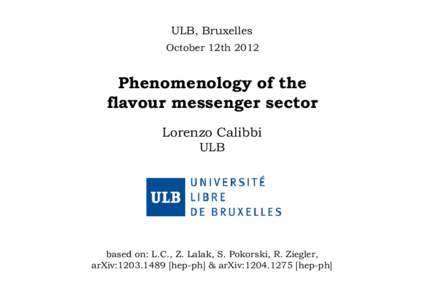<--- Back to Details
| First Page | Document Content | |
|---|---|---|
 Date: 2012-10-16 11:14:59Quantum field theory Supersymmetry Electroweak theory Flavour Yukawa interaction Superfield Physics Particle physics Standard Model |
Add to Reading List |
| First Page | Document Content | |
|---|---|---|
 Date: 2012-10-16 11:14:59Quantum field theory Supersymmetry Electroweak theory Flavour Yukawa interaction Superfield Physics Particle physics Standard Model |
Add to Reading List |